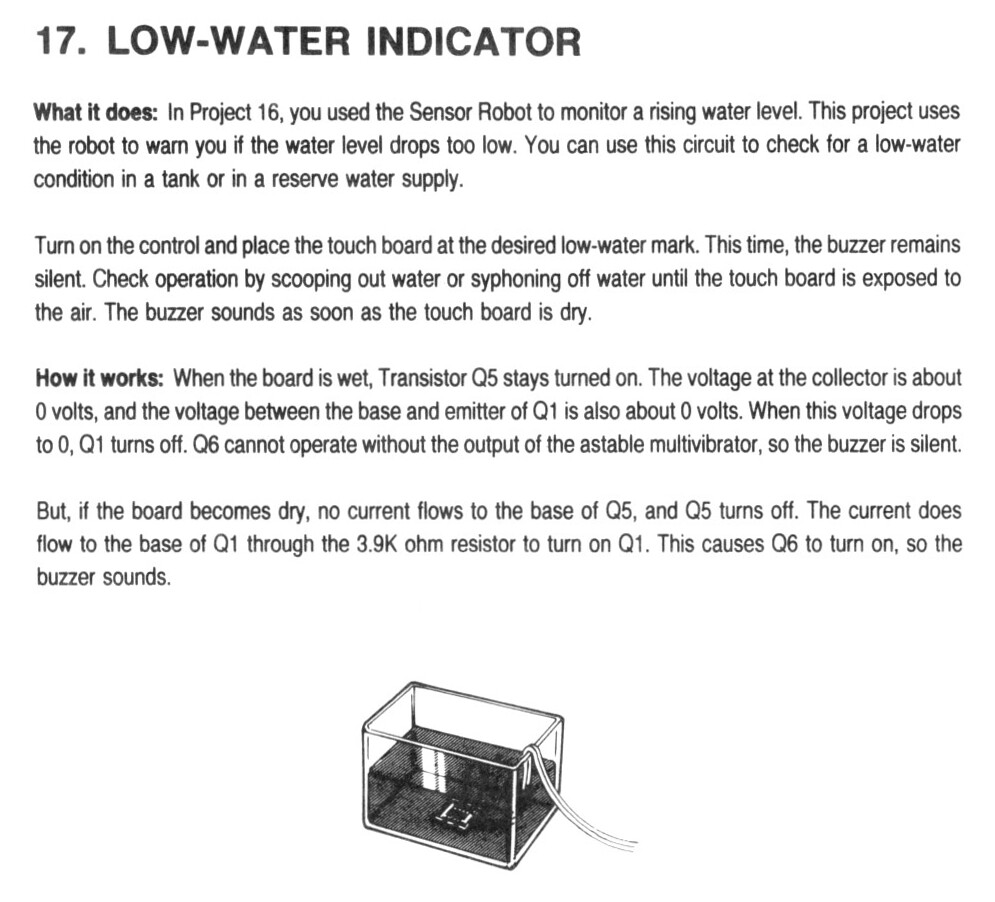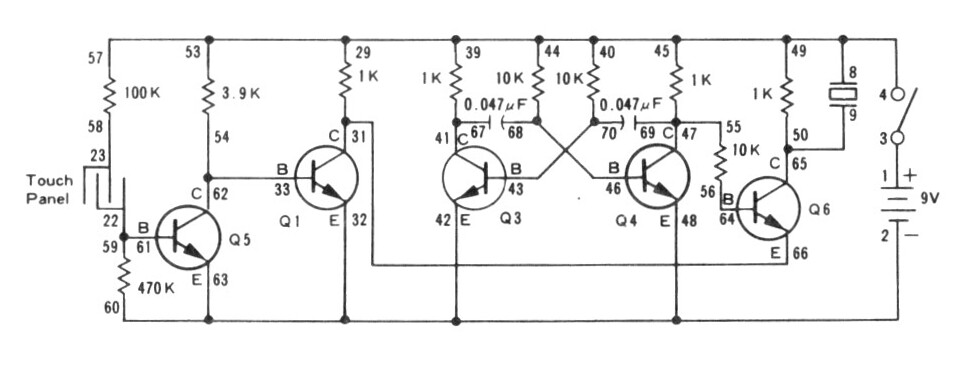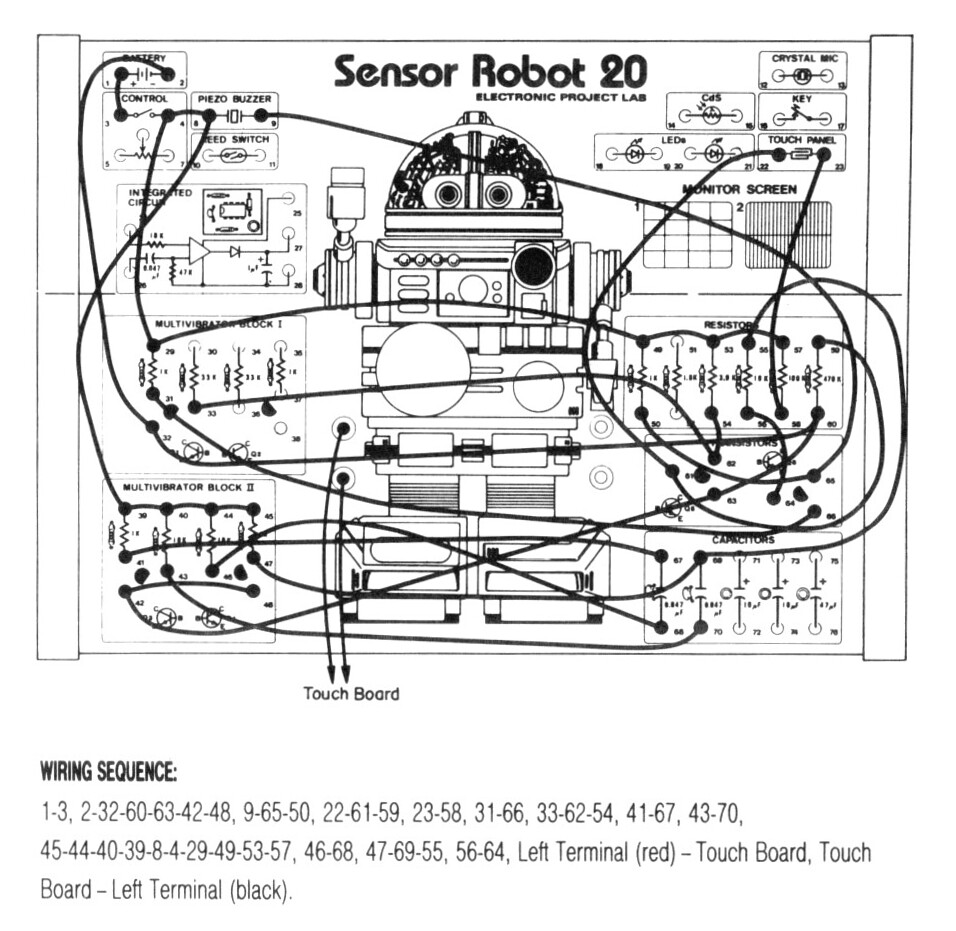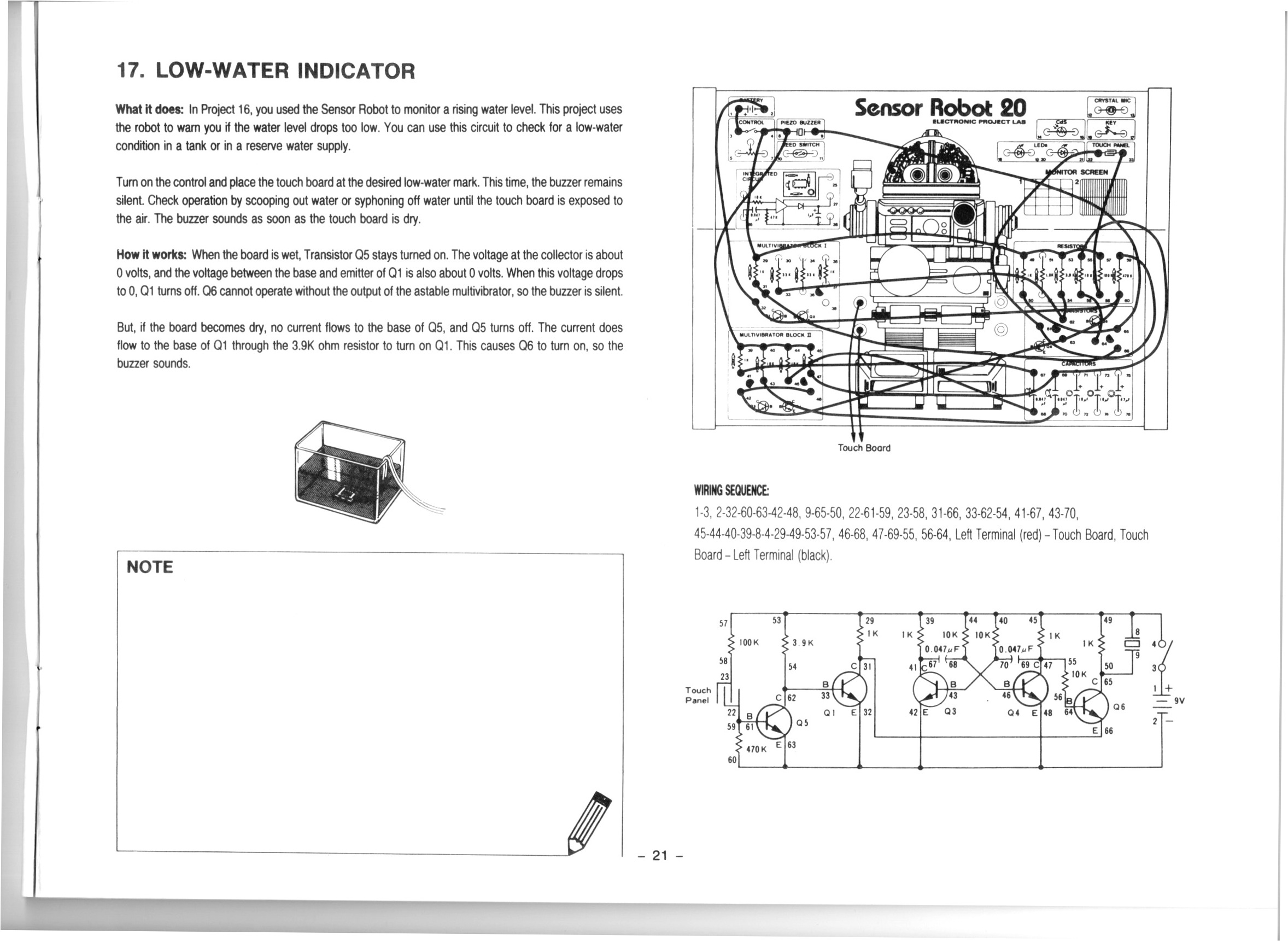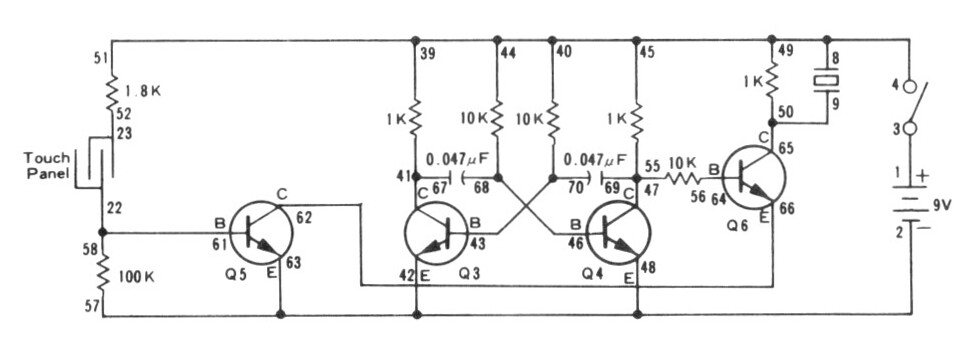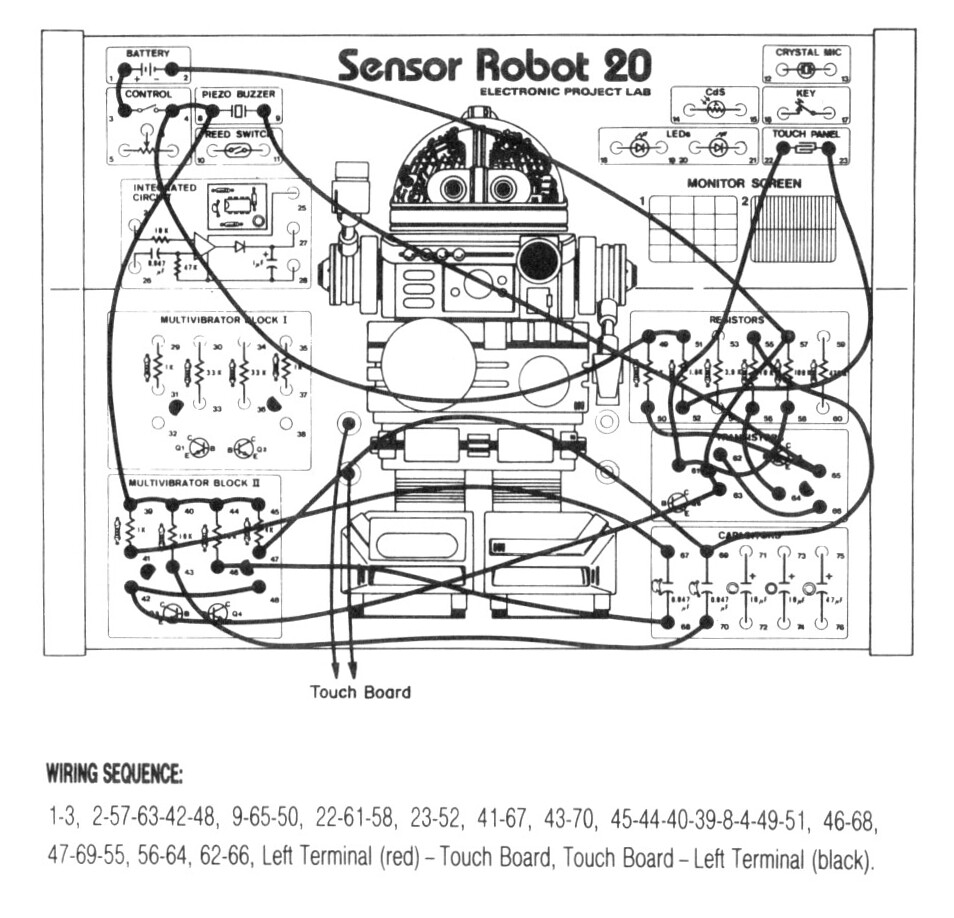This turned up on hacker news today: JTAG ‘Hacking’ the Original Xbox in 2023 – Using Intel CPU JTAG to dump the secret bootrom in Microsoft’s original Xbox. There’s some info being collected on github: github.com/Necrosys/x86-JTAG-Information.
Category Archives: Testing
Learning the Art of Electronics: A Hands-On Lab Course 2ed
I have been sad for some time that Learning the Art of Electronics: A Hands-On Lab Course is out of print. Little did I know, they have been working on a second edition! The revised edition is due out in March 2025. Excellent news! I don’t usually pre-order books, but I will pre-order my copy of Learning the Art of Electronics: A Hands-On Lab Course 2ed. There’s more info on the book’s website: learningtheartofelectronics.com.
Low-Water Indicator | Project 17/20 | Maxitronix 20in1 | In The Lab With Jay Jay
This post is part of my video blog and you can find more information about this video over here.
You can support this channel on Patreon: patreon.com/JohnElliotV
In this video we do the 17th project from the Maxitronix Sensor Robot 20 (20in1) Electronics Project Lab Kit: Low-Water Indicator.
We use the Rigol MSO5074 Mixed Signal Oscilloscope to see the output of the astable multivibrator. In the video I make a mistake and attach the probe to the wrong pins.
We use the METCAL PS-900 Soldering Station to solder the wires I use for the banana plugs I attach to the touch sensor an voice sensor (microphone).
We use the UNI-T UTi260B Thermal Imager to look at the heat profile of the circuit. We see that the low resistances (470Ω and 1KΩ) get the warmest, but the higher resistances (e.g. 10KΩ) are also slightly visible.
We use the Fluke 17B+ Digital Multimeter to check the resistance of the touch sensor.
We use the Peak Electronic Design Atlas LCR45 LCR Meter to measure the resistance of the resistor we use in the LED attachment circuit. This extra circuit allows us to switch out the buzzer for an LED, which makes a lot less racket. The resistor it uses turned out to be 470Ω.
We use the Riden RD6006 Bench Power Supply to provide 9V for our test circuit. Usually I take a current reading to see how much power the circuit draws in its various states, but I forgot!
We use the Horusdy Soldering Station with Hot Air Gun for its hot air gun in order to shrink the heat shrink which we added to the banana plug cables we attached to our sensors.
Thanks very much for watching! And please remember to hit like and subscribe! :)
Following is a product I use picked at random from my collection which may appear in my videos. Clicking through on this to find and click on the green affiliate links before purchasing from eBay or AliExpress is a great way to support the channel at no cost to you. Thanks!
Yum Cha 9-Inch Needle Nose Pliers notes notes |
Let’s go shopping!
Interlude #11: Playing with WeAct Studio Epaper Modules on ESP32-C3 MCU | In The Lab With Jay Jay
This post is part of my video blog and you can find more information about this video over here.
You can support this channel on Patreon: patreon.com/JohnElliotV
In this video we play around with the 2.13″ and 2.9″ WeAct Studio Epaper Modules available here: WeAct 2.9” 2.13″ 2.9 2.13 Inch Epaper Module E-paper E-Ink EInk Display Screen SPI Black-White Black-White-Red.
As I mention in the video I was having a hard time getting good solder joints from my Horusdy Soldering Station. This was annoying me so much that I went and purchased a new soldering iron! My new iron is an Metcal PS-900 Soldering Station and I love it! This is what a soldering iron should be!
We use the Arduino IDE and the sample code from WeAct Studio but we don’t successfully load content into our Epaper Module.
We use the Rigol MSO5074 Mixed Signal Oscilloscope to and the Rigol PLA2216 Logic Probe to wire up a Logic Analyzer to instrument out circuit, but we don’t follow through with that in the end. We run out of time. We will try again another day.
Thanks very much for watching! And please remember to hit like and subscribe! :)
Following is a product I use picked at random from my collection which may appear in my videos. Clicking through on this to find and click on the green affiliate links before purchasing from eBay or AliExpress is a great way to support the channel at no cost to you. Thanks!
Yum Cha 58-pcs Stainless Steel Thread Pitch Gauge notes notes |
Let’s go shopping!
Demo #6: Peak Electronic Design Atlas ESR Gold – Equivalent Series Resistance Meter | In The Lab
This post is part of my video blog and you can find more information about this video over here.
You can support this channel on Patreon: patreon.com/JohnElliotV
In this video we take a look at my new Peak Electronic Design Atlas ESR70 Gold ESR Meter.
If you’re interested I have other equipment from Peak Electronic Design.
Following are some accessories available from Peak Electronic Design for the ESR70 Gold and the LCR45 (I purchased all of these directly from Peak Electronic Design via their website, I will cover them in a future Mail Call video when they arrive):
- CRC01M – LCR Croc Clip set with 2mm sockets
- SMD03M – SMD Tweezers for LCR/ESR with 2mm sockets
- LCRLHP2 – Replacement LCR Hook Probes
- ENP90 – ESR/LCR Needle Probe set with 2mm sockets
- PCA23 – Peak Component Adapter for SOT-23
- 3DPAS – 3D Printed Peak Atlas Stand
- LX30 – Extension Cable for LCR40/45
There are cases available if you’re interested. I have the dual carry case as that is what my ATPK3 Peak Electronic Design Bundle Kit came in.
Thanks very much for watching! And please remember to hit like and subscribe! :)
Following is a product I use picked at random from my collection which may appear in my videos. Clicking through on this to find and click on the green affiliate links before purchasing from eBay or AliExpress is a great way to support the channel at no cost to you. Thanks!
Yum Cha 100×100 200X200mm VESA Wall Mount |
Let’s go shopping!
High-Water Indicator | Project 16/20 | Maxitronix 20in1 | In The Lab With Jay Jay
This post is part of my video blog and you can find more information about this video over here.
You can support this channel on Patreon: patreon.com/JohnElliotV
In this video we do the 16th project from the Maxitronix Sensor Robot 20 (20in1) Electronics Project Lab Kit: High-Water Indicator.
After we build the circuit we dump the sensor in a glass of water which causes the alarm to trigger. To avoid the obnoxious noise we put an LED in place of the buzzer.
Please be aware: while talking about this circuit I said that the astable multivibrator “flip flops” between states. And that’s kind of true in one sense, but I should be clear than an astable multivibrator is not a “flip flop” circuit. A flip flop circuit is a different type of circuit known as a bistable multivibrator, which is a different kind of thing. In this experiment we use an astable multivibrator to generate a 1.62 kHz square wave which provides our tone, we do not use a flip flop or bistable multivibrator circuit.
We use the Rigol MSO5074 Mixed Signal Oscilloscope to measure and visualize the 1.62 kHz square wave which generates our tone.
We use the UNI-T UTi260B Thermal Imager to investigate the circuit thermals. We see that the 1K resistors in the astable multivibrator generate the most heat.
We use the Fluke 17B+ Digital Multimeter to measure the voltage across Q5. Between about 500 mV and 750 mV is enough voltage to enable the output.
We use the Riden RD6006 Bench Power Supply to deliver the 9V DC required for the project. We use the current measurement from the power supply to see that when the LED is active the circuit draws about 23 mA compared to about 11 mA when the LED is not active.
We use the Horusdy Soldering Station with Hot Air Gun to dry the sensor after it got wet.
Thanks very much for watching! And please remember to hit like and subscribe! :)
Following is a product I use picked at random from my collection which may appear in my videos. Clicking through on this to find and click on the green affiliate links before purchasing from eBay or AliExpress is a great way to support the channel at no cost to you. Thanks!
Ausum 25 In 1 Precision Screwdriver Set notes notes |
Let’s go shopping!
AMBA specification
Today I learned of the Advanced Microcontroller Bus Architecture. There is detailed information to be found on the ARM website: AMBA Specifications.
Debugging
I’ve been reading Debugging: The 9 Indispensable Rules for Finding Even the Most Elusive Software and Hardware Problems. My mate @indigo suggested I read David A. Wheeler’s summary of it over here: David A. Wheeler’s Review of Debugging by David J. Agans. I know David A. Wheeler from his work on sloccount.
about:processes
Today I learned about about:processes which will show you what your Firefox browser is up to.
Demo #5: Peak Electronic Design Atlas LCR45 – LCR Component Meter with Impedance Measurement
This post is part of my video blog and you can find more information about this video over here.
You can support this channel on Patreon: patreon.com/JohnElliotV
In this video we take a look at my new Peak Electronic Design Atlas LCR45 LCR Meter.
If you’re interested I have other equipment from Peak Electronic Design.
Over on the EEVblog forum I ask What’s special about the frequency 14.9254 kHz? The answer seems to be that this is 1/67th of 1 MHz, which is probably as precise as the microcontroller they’re using can go.
You can learn more about my ALKOY Capacitor Discharge Pen.
There are accessories available for the LCR45. Stuff I am planning to get includes:
- CRC01M – LCR Croc Clip set with 2mm sockets
- SMD03M – SMD Tweezers for LCR/ESR with 2mm sockets
- LCRLHP2 – Replacement LCR Hook Probes
- ENP90 – ESR/LCR Needle Probe set with 2mm sockets
- PCA23 – Peak Component Adapter for SOT-23
- 3DPAS – 3D Printed Peak Atlas Stand
I would get the LX30 – Extension Cable for LCR40/45 but it doesn’t appear to be in stock.
There are cases available but I am not planning to get any of those:
Thanks very much for watching! And please remember to hit like and subscribe! :)
Following is a product I use picked at random from my collection which may appear in my videos. Clicking through on this to find and click on the green affiliate links before purchasing from eBay or AliExpress is a great way to support the channel at no cost to you. Thanks!
Yum Cha BM800 Condenser Microphone |
Let’s go shopping!

